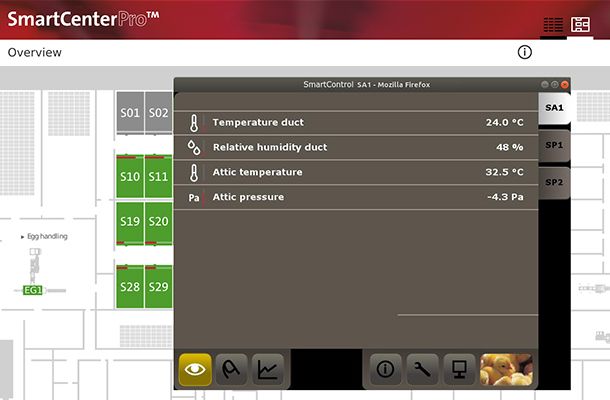Production of healthy, uniform day-old chicks requires accurate climate data
Tags: Hatchery management | Whitepaper
, 26 March 2019

In modern hatcheries, climate data are collected from various sensors installed in incubators and hatchery rooms, and from handheld measuring instruments. The performance of the sensors is crucial for continuous production of batches of first-class day-old chicks.
Maintenance of sensors, including cleaning filters and calibration, is of great importance. Calibration means comparing read-outs from the sensor with read-outs from a certified standard. As long as hatchability and chick quality meet expectations hatchery managers can rely on their team for maintenance and sensor calibration. However, to be able to interpret data correctly, the hatchery manager needs information on data collection procedures and on the level of reliability of the data delivered.
Standard information required for data interpretation:
- Sensor accuracy is reflected in the 'quality' of the data measured. Accuracy is an expression of the difference (error) between the measured value and true value. Since we cannot know the 'true value' precisely, accuracy is presented as a range of values.
- Precision, or repeatability, is a value ascribed to a sensor. It describes the spread in data on a standard object measured under standardised conditions. In practice this means that you calculate, for example, the average and standard deviation of egg shell temperature (n=10) of one egg, measured with an infrared ear thermometer. To do so, you need to have at least 10 measurements taken from the same spot on the egg shell.
- Random errors occur and may be due to precision limitations of the instruments OR conditions not being standardised throughout measurement.
- A stable sensor remains constant over time or shows low drift as it ages.
- A sensor is calibrated if its read-outs have been compared, under similar conditions, to read-outs from a standard sensor whose accuracy is 10 times higher. The standard sensor has a certificate of calibration provided by an institution that is certified to calibrate sensors and instruments.
- Reference values (or range of values) are numerical data collected under normal/standard conditions, measured using calibrated sensors of known precision and stability. Reference data can be (1) determined (mean + standard deviation) from climate data collected in the hatchery or (2) provided by breeder companies, for example average EST (Egg Shell Temperatures) for incubation or set points for RH to achieve optimum hatchability and chick quality.
In conclusion, a stable sensor of high repeatability is the best choice if you need to collect reliable data on a routine basis. Sensors must be calibrated regularly by a certified institution. A sensor or measuring instrument must be replaced if its deviation from the calibrated sensor is unacceptable (as defined by hatchery management).
Advice
- Clean sensors and protection filters before taking measurements
- Realise that accurate and stable instruments are essential if your aim is to perform statistical analysis of data collected over longer periods.
- Contact your incubator supplier for advice on how to maintain and calibrate incubator sensors.
- Ensure a certified institution calibrates your sensor and measuring instruments regularly.
- Be aware that the read-out from your reliable instrument may differ from read-outs from other brands of instruments, for example those used by colleague hatchery managers. Instruments with high levels of accuracy deliver read-outs that can be shared and compared among hatchery managers.
Written by Dr. Marleen Boerjan
We welcome your feedback on this article - and if you require any additional information, please don't hesitate to contact Pas Reform Academy.